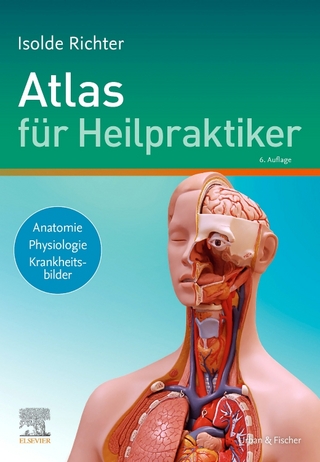
Introduction to Clinical Neurology
Oxford University Press Inc (Verlag)
978-0-19-777290-4 (ISBN)
- Lieferbar (Termin unbekannt)
- Versandkostenfrei
- Auch auf Rechnung
- Artikel merken
Each chapter begins with a set of clinical vignettes and associated questions, which are discussed at the end of the chapter. The final chapter provides twelve additional clinical vignettes and accompanying questions intended to allow the reader to practice applying the principles of localization and diagnostic reasoning covered in the first three chapters, and to review some of the specific disorders covered throughout the book.
Douglas J. Gelb is a general neurologist who received his MD and PhD degrees from the University of Chicago and completed neurology residency at the University of California San Francisco. Immediately after residency, he joined the faculty of the University of Michigan Neurology Department, where he is a Professor in the Clinical Track and the director of both the medical student neurology clerkship and pre-clinical education regarding diseases of the nervous system. He is a former Chair of the national Consortium of Neurology Clerkship Directors, and of the American Academy of Neurology's A.B. Baker Section of Neurologic Educators.
Preface to the Sixth Edition
Preface to the First Edition
Contributors
PART I: The Basic Approach
1. Where's the Lesion? (How We Localize)
I. Sample Localization Problems
II. The Game
III. The Rules
IV. The Play: The Long Version
V. The Play: The Abbreviated Version
VI. More Examples
VII. Rules for Speed Play
2. The Neurologic Examination (What We Localize)
I. More Localization Problems
II. General Comments on the Neurologic Examination
III. How to Do the Neurologic Examination
A. Mental Status Examination
B. Cranial Nerve Examination
C. Motor Examination
D. Reflex Examination
E. Sensory Examination
IV. Additional Comments on Terminology and Examination Technique
A. Mental Status Examination
B. Cranial Nerve Examination
C. Motor Examination
D. Reflex Examination
E. Sensory Examination
V. Interpretation of the Neurologic Examination
A. Mental Status Examination
B. Cranial Nerve Examination
C. Motor Examination
D. Reflex Examination
E. Sensory Examination
VI. Modifications of the Neurologic Examination
A. Screening Neurologic Examination
B. Video Examination
C. Examination of Patients with Altered Level of Consciousness
D. Inconsistent or Anomalous Examination Findings
VII. Supplementary Table for Reference
VIII. Discussion of Localization Problems
3. Diagnostic Reasoning: What's the Lesion? (Why We Localize)
I. Case Histories
II. Beyond Localization
A. Localization
B. Temporal Profile
C. Epidemiology
III. Etiology
A. Degenerative Diseases
B. Neoplastic Diseases
C. Vascular Diseases
D. Inflammatory Diseases
E. Toxic and Metabolic Diseases
F. Traumatic Diseases
G. Congenital and Developmental Diseases
IV. Discussion of Case Histories
PART II: Common Diseases
4. Stroke
I. Case Histories
II. Approach to Stroke
III. Background Information
A. Definitions
B. Classification of Strokes by Etiology
C. Pathophysiology
IV. Diagnosis
A. Clinical Features
B. Imaging
V. Management of Acute Stroke
A. Restoration of Blood Flow in Ischemic Stroke
B. Limitation of Deficits
C. Rehabilitation
VI. Secondary Prevention of Ischemic Stroke
A. Lipid Management
B. Antiplatelet Medication
C. Blood Pressure
D. Other Risk Factors
E. Cardioembolic Disease
F. Cervical Carotid Stenosis
G. Ischemic Stroke Mechanisms Other Than Cardioembolism and Cervical Carotid Stenosis
H. Determining the Underlying Mechanism of Stroke
VII. Secondary Prevention of Cerebral Hemorrhage
VIII. Primary Prevention
A. Hypertension
B. Smoking
C. Diabetes
D. Dyslipidemia
E. Mechanical Heart Valves
F. Atrial Fibrillation
G. Cervical Carotid Stenosis
H. Sickle Cell Disease
I. Other Factors
IX. Supplementary Tables for Reference
X. Discussion of Case Histories
5. Seizures
I. Case Histories
II. Approach to Seizures
III. Background Information
A. Definitions
B. Clinical Characteristics of Seizures
C. Seizures vs. Epilepsy
D. Epilepsy Classification
E. Electroencephalography
F. Pathophysiology of Seizures and Epilepsy
IV. Diagnosis
A. Characterizing the Presenting Spell
B. Identifying Prior Spells
C. Recognizing Spells That Are Not Seizures
V. Determining the Cause of Seizures
A. Provoked Seizures
B. Epilepsy
C. The Diagnostic Evaluation
VI. Management of Seizures and Epilepsy
A. Patients with Seizures but No Proven Epilepsy
B. Patients with Epilepsy
C. Patient Education (for People with Isolated Seizures or Epilepsy)
D. Restrictions (for People with Isolated Seizures or Epilepsy)
VII. Special Clinical Problems
A. Status Epilepticus
B. Seizures and Pregnancy
C. Refractory Seizures
VIII. Supplementary Tables for Reference
IX. Discussion of Case Histories
6. Neuromuscular Disorders
I. Case Histories
II. Approach to Neuromuscular Diseases
III. Background Information
A. Functional Divisions of the Peripheral Nervous System and Associated Symptoms
B. Proximal-to-Distal Organization of the Peripheral Nervous System
C. Electrodiagnostic and Other Laboratory Studies
IV. Specific Neuromuscular Diseases
A. Motor Neuron Diseases
B. Nerve Root Disorders (Radiculopathies)
C. Plexus Disorders (Plexopathies)
D. Peripheral Nerve Disorders (Neuropathies)
E. Neuromuscular Junction Disorders
F. Muscle Disorders (Myopathies)
V. Symptomatic Treatment
A. Emergency Measures
B. Non-Urgent Measures: Motor Symptoms
C. Non-Urgent Measures: Sensory Symptoms
VI. Supplementary Tables for Reference
VII. Discussion of Case Histories
7. Dementing Illnesses
Linda M. Selwa and Douglas J. Gelb
I. Case Histories
II. Approach to Dementing Illnesses
A. Is It Abnormal?
B. Are There Any Potentially Reversible Components?
C. Which Primary Degenerative Dementing Illness Is Most Likely?
III. Primary Dementing Illnesses
A. Alzheimer Disease
B. Dementia with Lewy Bodies (DLB)
C. Frontotemporal Dementia (FTD)
D. Vascular Cognitive Impairment
E. Limbic-predominant Age-related TDP-43 Encephalopathy (LATE)
F. Creutzfeldt-Jakob Disease (CJD)
G. Other Neurologic Diseases That Produce Dementia
IV. Supplementary Tables for Reference
V. Discussion of Case Histories
8. Movement Disorders
Linda M. Selwa and Douglas J. Gelb
I. Case Histories
II. Approach to Movement Disorders
III. Background Information
A. Anatomic Definitions
B. Clinical Definitions
C. Classification of Movement Disorders
IV. Specific Movement Disorders
A. Essential Tremor
B. Parkinson Disease
C. Other Parkinsonian Syndromes
D. Hereditary Ataxias
E. Huntington Disease
F. Tardive Dyskinesia
G. Dystonias
H. Wilson Disease
I. Tourette Syndrome
V. Supplementary Tables for Reference
VI. Discussion of Case Histories
9. Sleep Disorders
I. Case Histories
II. Approach to Sleep Disorders
III. Background Information
A. Definitions
B. Sleep Physiology
C. Diagnostic Tests
D. Classification of Sleep Disorders
IV. Trouble Staying Awake
A. Insufficient Sleep
B. Sleep Apnea
C. Narcolepsy
D. Other Causes of Hypersomnolence
V. Trouble Sleeping
A. Sleep-Onset Delay
B. Early Morning Awakening
C. Sleep Fragmentation
D. Sleep State Misperception
VI. Abnormal Behavior During Sleep
A. Nonrapid Eye Movement (NREM) Sleep Parasomnias
B. Rapid Eye Movement (REM) Sleep Parasomnias
VII. Discussion of Case Histories
10. Multifocal Central Nervous System Disorders
I. Case Histories
II. Approach to Multifocal Disorders
III. Focal Diseases with Multifocal Propagation
A. Neurologic Manifestations of Systemic Cancer
B. Central Nervous System Infections
IV. Inherently Multifocal Diseases
A. Multiple Sclerosis (MS) and Related Disorders
B. Rheumatologic Diseases
C. Sarcoidosis
D. Coagulation Disorders
E. Functional Disorders
V. Supplementary Tables for Reference
VI. Discussion of Case Histories
PART III: Common Symptoms
11. Acute Mental Status Changes
I. Case Histories
II. Background Information
A. Definitions
B. Focal Mental Status Changes vs. Altered Level of Consciousness
C. Physiology of Normal and Altered Consciousness
III. Approach to Acute Changes in Level of Consciousness
A. ABCs: Airway, Breathing, Circulation
B. Oxygen, Glucose, Naloxone
C. Pupils, Doll's Eyes, Motor Asymmetry
D. Other Electrolytes, Renal, Hepatic, Temperature Abnormalities
E. Everything Else
IV. Special Circumstances
A. Head Trauma
B. Increased Intracranial Pressure
C. Brain Death
V. Discussion of Case Histories
12. Headache
I. Case Histories
II. Approach to Headache
III. Background Information
A. Primary vs. Secondary Headaches
B. Pathophysiology of Migraine
IV. Headache Emergencies: Subarachnoid Hemorrhage and Bacterial Meningitis
V. Other Secondary Headaches
A. Viral Meningitis or Encephalitis
B. Fungal or Tuberculous Meningitis
C. Mass Lesions
D. Giant Cell (Temporal) Arteritis
E. Idiopathic Intracranial Hypertension (IIH)
F. Spontaneous Intracranial Hypotension
G. Cerebral Venous Thrombosis
H. Arterial Dissection
I. Reversible Cerebral Vasoconstriction Syndrome (RCVS)
J. Systemic Conditions
K. Secondary Headache Syndromes with Diagnostic Ambiguity
VI. Primary Headaches
A. Migraine and Tension Headaches
B. Trigeminal Neuralgia
C. Glossopharyngeal Neuralgia
D. Cluster Headaches
E. Other Trigeminal Autonomic Cephalalgias (TACs)
F. Primary Stabbing Headache
G. Persistent Idiopathic Facial Pain
VII. Supplementary Tables for Reference
VIII. Discussion of Case Histories
13. Visual Symptoms
I. Case Histories
II. Background Information
A. Definitions
B. Overview of the Visual System
III. Approach to Visual Symptoms
IV. Monocular Vision Loss
A. Acute or Subacute Monocular Vision Loss in Young People
B. Acute, Subacute, or Chronic Monocular Vision Loss in Older People
V. Transient Vision Loss (Monocular or Binocular)
VI. Persistent Binocular Vision Loss
VII. Diplopia
A. Localization
B. Differential Diagnosis and Management
VIII. Discussion of Case Histories
14. Dizziness and Disequilibrium
I. Case Histories
II. Approach to Dizziness
III. Localization
IV. Differential Diagnosis
A. Central Vertigo
B. Peripheral Vertigo
V. Disequilibrium
VI. Discussion of Case Histories
15. Back Pain and Neck Pain
I. Case Histories
II. Approach to Back or Neck Pain
A. Emergency Situations
B. Non-Urgent Indications for Surgery
III. Specific Conditions Causing Back or Neck Pain
A. Musculoskeletal Pain
B. Disc Herniation
C. Spinal Stenosis
IV. Discussion of Case Histories
16. Incontinence
I. Case Histories
II. Background Information
III. Approach to Incontinence
A. Non-neurologic Causes of Incontinence
B. Central vs. Peripheral Nervous System Causes of Incontinence
IV. Supplementary Table for Reference
V. Discussion of Case Histories
PART IV: Bookends
17. Pediatric Neurology
I. Case Histories
II. Developmental Considerations
III. Hypotonic Infants
IV. Developmental Delay and Developmental Regression
V. Paroxysmal Symptoms
A. Migraine
B. Seizures
C. Breath-Holding Spells
D. Benign Paroxysmal Vertigo
VI. Gait Disturbance
A. Spasticity
B. Weakness 434
C. Ataxia
VII. Functional Disorders
VIII. Discussion of Case Histories
18. Geriatric Neurology
I. Case Histories
II. Geriatric Issues
III. The Neurologic Examination in Normal Aging
A. Mental Status
B. Cranial Nerves
C. Motor System
D. Reflexes
E. Sensation
IV. Common Neurologic Symptoms in the Elderly
A. Dizziness
B. Gait Disturbance
C. Incontinence
D. Dementia
E. Pain
V. Discussion of Case Histories
19. Practice Cases
I. Case Histories
II. Answers
Index
| Erscheinungsdatum | 30.05.2024 |
|---|---|
| Verlagsort | New York |
| Sprache | englisch |
| Maße | 140 x 211 mm |
| Gewicht | 658 g |
| Themenwelt | Medizin / Pharmazie ► Medizinische Fachgebiete ► Medizinethik |
| Medizin / Pharmazie ► Medizinische Fachgebiete ► Neurologie | |
| ISBN-10 | 0-19-777290-0 / 0197772900 |
| ISBN-13 | 978-0-19-777290-4 / 9780197772904 |
| Zustand | Neuware |
| Haben Sie eine Frage zum Produkt? |
aus dem Bereich


